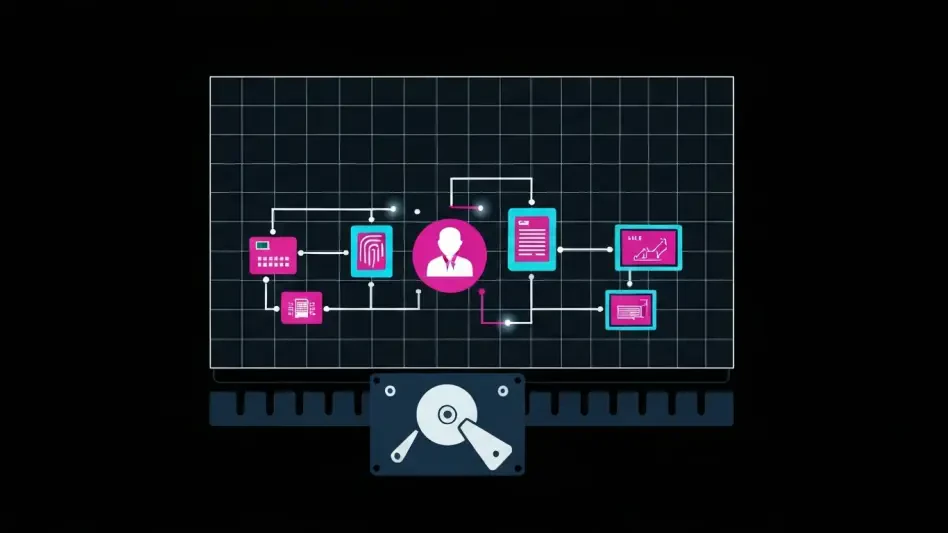What happens when a state agency entrusted with safeguarding personal data becomes the target of a ruthless cyberattack? In a shocking turn of events, the Maryland Department of Transportation (MDOT) has fallen victim to a massive data breach, with hackers claiming to auction stolen personal information on the dark web for millions. This isn’t just a technical glitch—it’s a stark warning of how vulnerable even government systems are to the growing menace of cybercrime, putting countless individuals at risk of identity theft and financial ruin.
A Wake-Up Call for Digital Security
The significance of this breach cannot be overstated. When sensitive data like driver’s licenses, Social Security numbers, and personal addresses are exposed, the fallout can ripple through lives for years. The incident at MDOT serves as a grim reminder that no entity, not even a government agency, is immune to the sophisticated tactics of modern cybercriminals. As ransomware attacks escalate, targeting public institutions with alarming frequency, the need for robust cybersecurity has never been more urgent. This story isn’t just about a single breach—it’s about the broader battle to protect critical infrastructure in an increasingly digital world.
Unraveling the Cyber Heist at MDOT
The details emerging from the MDOT breach paint a disturbing picture of digital theft on a grand scale. The Rhysida ransomware group, a known player in the cybercrime underworld, has claimed responsibility for infiltrating MDOT’s systems and extracting highly sensitive data. According to reports from cybersecurity monitoring platforms, the stolen information includes full names, birth dates, home addresses, and even scanned images of passports and Social Security cards belonging to agency employees. With a starting bid of 30 Bitcoin—equivalent to over $3 million—the hackers have set a tight deadline of less than a week for the dark web auction, intensifying the urgency of the situation.
Beyond the raw data, the breach exposes a critical flaw in the security of public institutions. While the exact method of entry remains under investigation, experts suggest that outdated systems and insufficient training may have provided an opening for the attackers. The Maryland Transit Administration, a key arm of MDOT, has confirmed a data loss incident but is withholding specifics to preserve the integrity of the ongoing probe. This lack of transparency, while understandable, leaves affected individuals in a state of uncertainty, wondering if their personal information is already in the hands of malicious buyers.
Official Statements and Expert Warnings
Voices from within MDOT and beyond are shedding light on the gravity of this cyberattack. Veronica Battisti, a spokesperson for the Maryland Transit Administration, addressed the incident with measured caution, confirming that personal information was indeed compromised. “Notifications will be sent to those affected as soon as possible,” Battisti stated, though she refrained from commenting on the dark web auction to avoid jeopardizing the investigation. Her words reflect a delicate balance between public accountability and the need to protect sensitive details during an active case.
Cybersecurity professionals are sounding the alarm on a larger trend of which this breach is merely a symptom. The Cybersecurity and Infrastructure Security Agency has tracked the Rhysida group’s activities since at least 2023, noting their attacks on diverse sectors including education, healthcare, and government agencies. An agency report highlights that such groups exploit systemic weaknesses for profit, often demanding exorbitant ransoms or auctioning data to the highest bidder. This expert consensus points to an escalating threat landscape where public entities, often underfunded in cybersecurity, remain prime targets for exploitation.
The Broader Threat of Ransomware in Public Sectors
Zooming out from the specifics of the MDOT case reveals a chilling pattern of ransomware attacks targeting government bodies. Over the past few years, public institutions have become a favored mark for cybercriminals due to the treasure troves of personal data they hold and, frequently, their outdated defenses. The Cybersecurity and Infrastructure Security Agency estimates that ransomware incidents against state and local agencies have spiked by over 40% since 2025, with recovery costs and damages running into billions annually. These attacks don’t just disrupt operations—they erode public trust in the systems meant to serve and protect.
The Rhysida group’s tactics exemplify the ruthless efficiency of modern cybercrime. By encrypting systems or stealing data outright, they create a double-edged sword: pay the ransom and risk funding further crime, or refuse and watch as stolen information floods the black market. Other high-profile cases, such as attacks on school districts and municipal governments, underscore that no sector is safe. This growing menace demands a reevaluation of how public agencies allocate resources, pushing cybersecurity to the forefront of budget priorities before more breaches shatter lives.
Steps to Shield Yourself and Bolster Defenses
For individuals potentially caught in the crosshairs of the MDOT breach, proactive measures can help mitigate the risks of identity theft. Monitoring credit reports for unusual activity, placing freezes on accounts if fraud is suspected, and staying alert for phishing emails or calls are critical first steps. Cybersecurity experts also recommend updating passwords regularly and avoiding the reuse of credentials across platforms. These actions, while not foolproof, can serve as a vital line of defense against the misuse of stolen data.
On a systemic level, government agencies must act decisively to prevent future incidents. Investing in modern security infrastructure, conducting regular audits, and training staff to recognize threats like phishing attempts are non-negotiable in today’s digital climate. Collaboration with federal law enforcement and cybersecurity firms, as seen in the response to the MDOT breach, offers a pathway to track perpetrators and recover stolen data. Beyond individual agencies, a national framework for cyber resilience could standardize protections across states, ensuring that no public entity remains a weak link in the chain.
Reflecting on a Breach That Shook Trust
Looking back, the cyberattack on the Maryland Department of Transportation stood as a defining moment in exposing the fragility of public data systems. The audacity of the Rhysida ransomware group in auctioning stolen information on the dark web sent shockwaves through affected communities, leaving lasting concerns about privacy and safety. The incident forced a reckoning with the reality that even trusted institutions could falter under the weight of sophisticated cyber threats.
Moving forward, the path to recovery demanded more than just damage control—it required a fundamental shift in how cybersecurity was prioritized. Strengthening digital fortifications, fostering public-private partnerships, and empowering individuals with tools to protect themselves emerged as essential steps to rebuild confidence. As investigations unfolded, the hope lingered that lessons learned from this breach would pave the way for a safer digital future, where personal data no longer hung in the balance of the next cyber heist.








